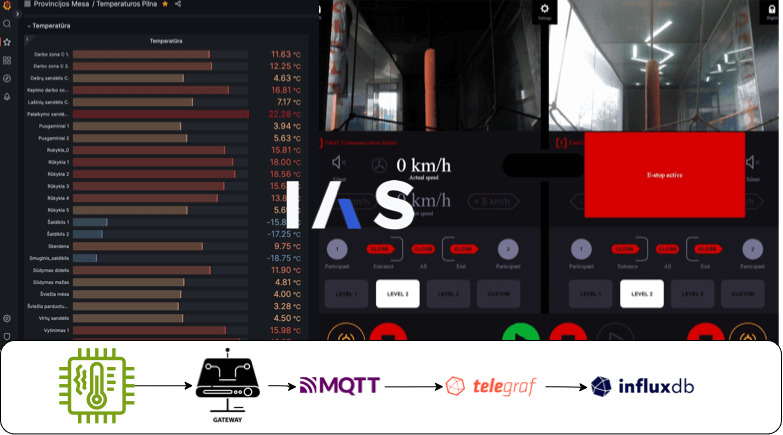In the ever-changing landscape of Industrial Internet of Things (IoT) data analytics, companies are constantly looking for innovative solutions to unlock the full potential of their data. At IAS, we specialize in IIoT data analysis and integration, empowering companies to make data-driven decisions. In the following article, we explore the evolution of data analytics and why the usual, historically used methods in the industry are no longer the preferred choice, showing the benefits to the industry of using open source technologies such as InfluxDB, Telegraf and Grafana.
With the advent of open source platforms such as InfluxDB, Telegraf, and Grafana, companies gained access to powerful, scalable, secure, and cost-effective solutions for collecting, storing, and analyzing data from IIoT devices.
To further emphasize the safety and reliability of open source technologies, we highlight that giants like Tesla use technologies like InfluxDB for real-time monitoring and analysis of vehicle telemetry data, enabling proactive maintenance and optimizing vehicle performance.
In the new era of IIot data analytics, the key drivers of IIot enterprise value are:
Scalability and Performance: InfluxDB, a purpose-built time series database, excels at handling huge amounts of time-stamped data. Its distributed architecture and efficient storage mechanisms ensure smooth scalability, allowing enterprises to expand their data infrastructure without sacrificing performance.
Flexibility and customization: Telegraf, a lightweight data collection agent, offers unparalleled flexibility and customization. With its modular design and extensive plug-in ecosystem, Telegraf can seamlessly integrate with a wide range of devices, protocols and data sources from business to operating systems, empowering businesses to tailor their data analytics stack to their specific needs.
Visualization and Monitoring: with Grafana, companies can gain real-time insight into their data, visualize trends and deviations, and easily monitor key performance indicators. Unrivaled flexibility and customization options for creating dashboards and visualizations. Users can easily create and customize dashboards for their specific needs, incorporating a wide variety of data sources, widgets, and visualization types.
Why legacy methods fall short: a comparative analysis
Unlike open source technologies such as InfluxDB, Telegraf and Grafana, historically applied histograms and data visualization tools pales in comparison:
- Legacy systems are often proprietary and vendor dependent, locking companies into expensive licensing agreements and limiting their ability to innovate and adapt to changing technology trends.
- Legacy systems lack the scalability and flexibility needed to handle the ever-increasing volume and variety of data generated by IIoT devices, resulting in performance bottlenecks and data silos.
- Legacy systems are expensive to maintain and upgrade, requiring significant investments in hardware, software and expertise.
Embracing the Future: Harnessing the Power of Open Source IIoT Data Analytics
In conclusion, the development of IIoT data analytics has ushered in a new era of innovation and opportunity. By embracing technology trends like InfluxDB, Telegraf, and Grafana, companies can unlock the full potential of their data, gain actionable insights, and improve their ability to compete with their competitors. At IAS, we are committed to helping businesses navigate this digital transformation journey and harness the power of data in the most flexible and scalable way for the industry.
We help start small with data-driven action drivers and drive our customers to scale. No vendor tying, because flexibility is the key to the current dynamics of technology development.
No vendor lock-in, flexibility is key in a dynamic technology system.



